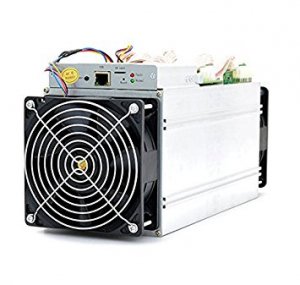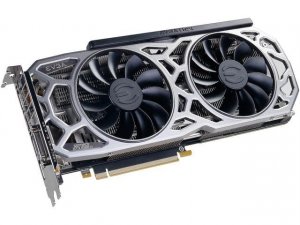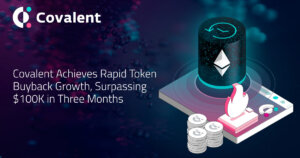 Why Bitmain’s Ethereum ASICs Will Never Replace GPUs
Why Bitmain’s Ethereum ASICs Will Never Replace GPUs Why Bitmain’s Ethereum ASICs Will Never Replace GPUs

Cover art/illustration via CryptoSlate. Image includes combined content which may include AI-generated content.
Rumors have surfaced that Bitmain has developed an Ethereum ASIC miner capable of tanking the Ethereum mining market.

Correction: The prediction made in the article below was incorrect. An Ethereum ASIC is feasible has been released since this article was written.
At CryptoSlate, we strive to provide you with unbiased and accurate news coverage and have since corrected the analysis in the adjacent article.
Bitmain Develops Ethereum ASICs
Bitmain is one of the industry’s largest suppliers of Bitcoin ASICs. Furthermore, the company operates the most substantial cryptocurrency mining operation in the world. Bitmain has practically cornered the Bitcoin mining market with its

Antminer S9, one of the most cost-effective Bitcoin miners.
On March 26th, Susquehanna Financial’sChristopher Rolland confirmed that Bitmain had developed an ASIC chip to mine Ethereum, and subsequently downgraded stock ratings on chip designers Nvidia and AMD. Rolland said in a note to clients last Monday:
“…we confirmed that Bitmain has already developed an ASIC for mining Ethereum, and is readying the supply chain for shipments in 2Q18,”
To add to the worrying news, Bitmain may not be the only vendor developing ASICs according to Rolland,
“…we have learned of at least three other companies working on Ethereum ASICs, all at various stages of development.”
Background on Mining
In a proof-of-work system, a cryptocurrency is supported by computers all over the world through a process called mining. These computers perform computations that solve a sophisticated algorithm and add transactions to the blockchain ledger. The more decentralized the network, the more secure from malicious attack.
There are two types of computer chips that are profitable for mining:
- GPUs (graphical processing units)
- ASICs (application-specific integrated circuits)

GPUs are a type of computer hardware initially designed for rendering graphics in electronic devices such as computers and mobile phones.
The highly parallel structure of GPUs also makes them highly efficient at processing large blocks of data in parallel, making GPUs ideal for cryptocurrency mining.
ASICs are chips designed for a narrow purpose or a specific algorithm; however, these chips are inefficient at any other kind of computing.
What this means for cryptocurrency
Bitcoin’s mining algorithm, based on SHA-256 cryptography, is vulnerable to becoming engineered into an ASIC chip. The ASICs used to mine Bitcoin are thousands of times more efficient than other kinds of computer hardware. Without access to specialized equipment Bitcoin mining is unprofitable. Meanwhile, Bitmain can charge outlandish prices for its lucrative mining hardware.
Hardware specialization is undesirable for a cryptocurrency. Only miners who have the money to either purchase or develop competitive hardware can mine profitably, thereby increasing the barrier to entry and subsequently increasing the level of centralization in a cryptocurrency.
Ultimately, cryptocurrencies which are prone to ASIC engineering are more susceptible to malicious actors and 51% attacks.
ASIC-Resistant Cryptocurrencies

Fortunately, the creators of Ethereum and many other cryptocurrencies had the foresight to address centralization issues stemming from ASIC development.
Two features in Ethereum’s mining algorithm make Ethereum ASICs impractical:
- Random data selection, and;
- “Poison the well” contracts
Random data selection is a process of mining Ethereum where miners are required to hash data that is randomly selected from transactions in the last block. Since Ethereum smart contracts can contain any computation, and miners cannot choose which contracts to process, an Ethereum ASIC is essentially an ASIC that is good at general, rather than specialized, computation; in other words a GPU.
However, if a particular kind of computation becomes popular on the Ethereum blockchain, this may no longer be the case. An ASIC could have an advantage over a GPU in that scenario.
The Ethereum whitepaper mentions a second defense mechanism, “poisoning the well.” If a certain type of computation were to become popular, then a miner using general purpose hardware has an incentive to thwart ASIC users.
Conventional miners can create large numbers of Ethereum contracts that are difficult for ASICs to solve.
Such a maneuver would undermine a conventional miner’s competitors and maximize the conventional miner’s profits. This smart combination of technical design and economic incentivization prevents ASICs from proliferating in other cryptocurrencies aside from Bitcoin.
What this means for miners
It is likely that Bitmain and other cryptocurrency-ASIC designers are engaging in slick marketing. It is not uncommon for mining hardware vendors to purchase average GPUs, put them in a black box, and sell them at a premium as a “specialized Ethereum miner.”
By removing a few aesthetic features and adding some peripheral components to existing GPU chips, Bitmain can claim to have developed an “Ethereum ASIC” that is built using a chip from AMD and Nvidia and charge a premium to unsophisticated buyers.

































































